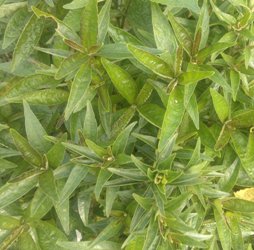
The Star Newspaper: |
 |
BRAIN NEURO TREATMENT AND RESEARCH FOR CEREBRAL PALSY
Definition of cerebral palsy
The term cerebral palsy (CP) was originally coined more than a century ago and loosely translates as "brain paralysis." However, a precise definition has remained elusive because cerebral palsy is not a single diagnosis but an "umbrella" term describing nonprogressive brain lesions involving motor or postural abnormalities that are noted during early development. cerebral palsy has been described as follows:
A group of disorders of the development of movement and posture causing activity limitations that are attributed to non-progressive disturbances that occurred in the developing fetal or infant brain. The motor disorders of cerebral palsy are often accompanied by disturbances of sensation, cognition, communication, perception, and/or behavior and/or a seizure disorder.
Age of onset
The brain lesions of cerebral palsy occur from the fetal or neonatal period to up to age 3 years. Insults to the brain after age 3 years through adulthood may manifest clinically as similar or identical to CP, but, by definition, these lesions are not CP. Although the lesion to the developing brain occurs prior to age 3 years, the diagnosis ofcerebral palsy may not be made until after that time. Some authorities advocate not making a definitive diagnosis in some cases until age 5 years or later. This approach allows the clinical picture to be clear and potentially allows exclusion of progressive diseases . In addition, some children have been diagnosed with cerebral palsy at an early age, only to have the symptoms resolve later .
Lesion location
CP is restricted to lesions of the brain only; diseases specific to the peripheral nerves of the spinal cord (eg, spinal muscular atrophy, myelomeningocele) or to the muscles (eg, muscular dystrophies), although causing early motor abnormalities, are not considered CP cerebral palsy.
Associated findings
Approximately 30-50% of patients with cerebral palsy have mental retardation, depending on the type of CP. However, because of oromotor, fine motor, and gross motor difficulties, communication in cerebral palsy patients may be impaired and expression of intellectual capacity may be limited. However, if cerebral palsy is approached in a multidisciplinary manner, with physical, occupational, and nutritional therapy to maximize rehabilitative efforts, patients can be more fully integrated academically and socially.
Approximately 15-60% of children withcerebral palsy have epilepsy, and epilepsy is more frequent in patients with spastic quadriplegia or mental retardation.
Etiology and risk factors
The etiology of cerebral palsy is not well understood, and brain lesions are thought to be associated with prenatal, perinatal, or postnatal events of varying causes. Risk factors for cerebral palsy are multifactorial and can include preterm birth, multiple gestation, intrauterine growth restriction, male sex, low Apgar scores, intrauterine infections, maternal thyroid abnormalities, prenatal strokes, birth asphyxia, maternal methyl mercury exposure, and maternal iodine deficiency.
Classification and types
CP cerebral palsy is classified according to resting tone and what limbs are involved (called topographic predominance). Spastic CP, due to cortex/pyramidal tract lesions, is the most common type and accounts for approximately 80% of cases . Spasticcerebral palsy is characterized by spasticity (velocity-dependent increase in tone), hyperreflexia, clonus, and an upgoing Babinski reflex. Extrapyramidal or dyskineticcerebral palsy is characterized more by abnormal involuntary movements.
Typical types of CP
* Spastic hemiplegia -cerebral palsy predominantly affecting one side of the body, with upper extremity spasticity more than lower extremity spasticity (eg, right side involved with right arm more so than right leg)
* Spastic diplegia - cerebral palsy affecting bilateral lower extremities more than upper extremities
* Spastic quadriplegia -cerebral palsy affecting all 4 extremities (full body)
* Dyskineticcerebral palsy (athetoid CP, choreoathetoid CP, and dystonic CP) -cerebral palsy with extrapyramidal signs characterized by abnormal movements; hypertonicity often is associated
* Mixedcerebral palsy -cerebral palsy with no single specific tonal quality predominating; typically characterized by a mixture of spastic and dyskinetic components
* Hypotoniccerebral palsy - cerebral palsy with truncal and extremity hypotonia with hyperreflexia and persistent primitive reflexes; thought to be rare
Juliana, 31, Malaysia - "My 2-years-old daughter is having cerebral palsy syndrome. I know this from Chinese Master when I was accompanying my friend undergoes his acupuncture treatment session at Chinese Master’s treatment centre in Kuala Lumpur. I took that opportunity to ask Chinese Master about my daughter’s problems. My daughter had stiff limbs. She could not even balance her body at all. According to Chinese master, my daughter must be given immediate treatment because if delayed treatment, she need a longer time to recover since her body muscles still tender. And at that time, Chinese Master gave me one type of herbal medicine called ‘Brain Powder’ for my daughter taking at home before I can bring her to Chinese Master’s treatment centre for acupuncture treatment session. The ‘Brain Powder’ is specially made for cerebral palsy children. After 2 months I sent my daughter for Cerebral Palsy neuro acupuncture treatment from Chinese Master and gave her the herbal medicine ‘Brain Powder’, she had started can balance her body. She already can stand up while holding to the chair. At Chinese master treatment centre, my daughter also been trained to walk during the acupuncture treatment session. Up to 4 months undergoing acupuncture treatment, my daughter was able to raise up her hands for a few minutes. Her fingers can also move and holding things. I was very happy and grateful with her changes. There is no doubt that acupuncture treatment from Chinese Master is very effective. Until now, I still bring my daughter to undergo acupuncture treatment from Chinese Master for increasing her immune system. I will never change to another treatment anymore!" |
| :: CLICK HERE FOR MORE VIDEO :: |
OTHERS RELATED ACUPUNCTURE AND HERBAL TREATMENT SITE |
| HERBAL ADVERTISEMENT |
| AUTISM |
| ECZEMA CURE |
| CEREBRAL PALSY TREATMENT |
| AUTISTIC AUTISM TREATMENT |
| ACUPUNCTURE AND HERBAL TREATMENT IN KL MALAYSIA |
NEWS |
"Discover Autism Treatment with Famous Chinese Master!" |
"Click Here for Eczema Cure!" |
